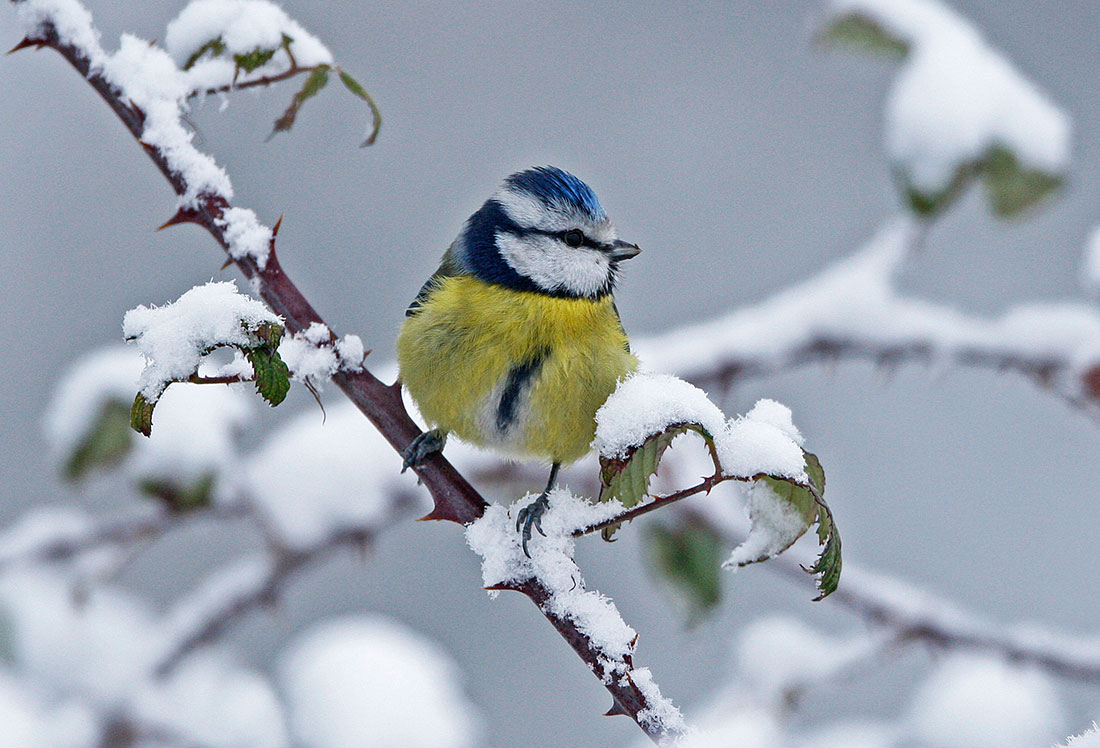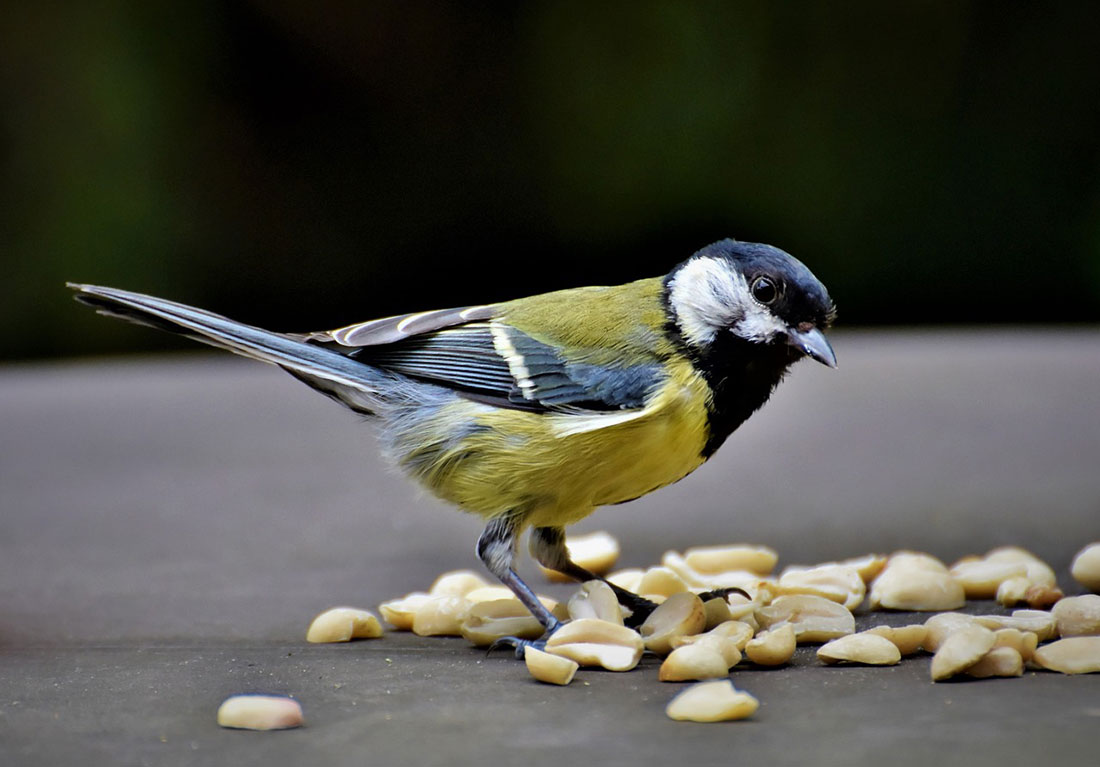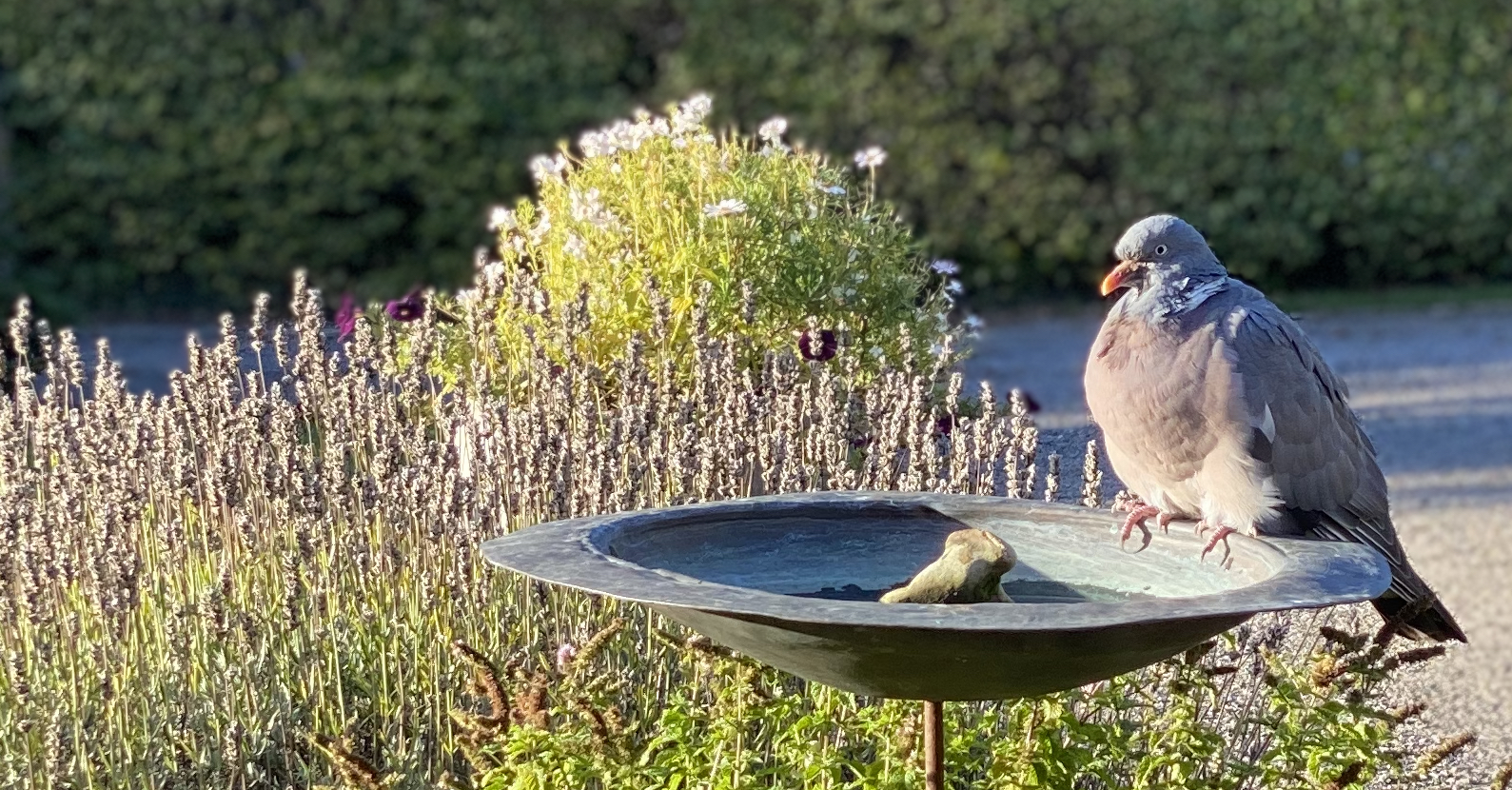
Feeding Garden Birds – How To Get Started!
It’s a real treat to see wild garden birds eating nuts, grains and seeds that you have provided for them especially in the colder months when you know that you are also helping them to survive the winter. Feeding birds doesn’t just make them full and happy it is also surprisingly mindful and makes us feel good too.
Our ELIZABETH Bird Feeder Tree is positioned literally outside our kitchen window and above this is our bathroom so in the morning, if I open the blind slowly and gently, I can honestly say that the first thing I see are happy birds and in my humble opinion there isn’t a better way to start the day!
AND, the really great news is that feeding wild birds in your garden is simple to do – to get started feeding birds in your garden all you need are 3 things:
1. Food
Food is obvious right? But once you begin looking it can be a bit daunting working out where to start. The cheapest and simplest thing to do could be to buy a bag of mixed seeds and grains (no whole nuts please) and scatter a small amount of it on the ground every morning just like I used to do with my granny when I was a little girl. I have to say that I don’t actually do this myself just because I worry about rats and cats and other predators.
Luckily, there are various vessels available and you can offer more specific foods too. The advantages of this is that you will attract a larger variety of birds. The most loved food is probably sunflower hearts. These are highly nutritious and are enjoyed by a huge selection of birds, making them the most versatile and the easiest to start with. But they’re expensive so it is possible to manage costs and benefit your garden birds by offering a selection of foods. Birds are like humans in that they benefit from a balanced diet!
To help you choose how to start feeding the wild birds in your garden I thought I would list the different types of food and what birds they tend to attract:
Sunflower Seed Hearts / Kernels
Let’s start with these highly nutritious morsels. The shell of the black sunflower seed is mechanically removed leaving just the inner heart. With the husk removed the added bonus is that there are no messy hulls to clear up. Before I knew about sunflower hearts we never had any finches in our garden but the moment I hung up a feeder full of these incredible seeds in flew the goldfinches, greenfinches and chaffinches. And last year we even attracted a pair of beautiful siskins AND a yellowhammer. AMAZING!
Other birds that LOVE a sunflower heart are: blackbirds, blue tits, collared doves, coal tits, dunnocks, great spotted woodpeckers, great tits, house sparrows, long-tailed tits, nuthatches, robins, starlings and wood pigeons.
Wild Bird Peanuts
It might be easier to list the birds that don’t eat nuts! Having said that you won’t find finches here, but most other species will love them. Look out for the great spotted woodpecker, flocks of long-tailed tits and then there are my most favourite which are the nuthatches.
Other birds that love nuts are blackbirds, blue tits, collared doves, coal tits, dunnocks, great tits, house sparrows, robins, starlings and wood pigeons.
Don’t be tempted to feed your garden birds ones from the supermarket though. For more information on peanuts please read this blog from Happy Beaks – it’s informative and it made me smile.
Suet Fat Balls
I find that the weather has to be really cold for these to be eaten but when it is you and your wild garden birds will reap the rewards. Suet is a hard crumbly dry fat which is high in energy and calories and when the weather is cold the birds really benefit from the high fat content. These balls can be bought plain or studded with seeds, dried worms, insects or fruit. Personally, we like to offer the ones with worms and insects.
Birds that love suet are: blackbirds, blue tits, coal tits, great tits, long tailed tits, and the ever-present starling. If you’re lucky or live in the right place you may even get siskins, redpolls and great spotted woodpeckers especially if you offer it in a coconut half!
Not all fats are good though and if you’d like to know why then click here to read the blog from Native Bird Care and find out.
Niger Seed / Nyger Seed
Adored by finches of all types including the beautiful siskin and with the added bonus of NOT being enjoyed by squirrels! These tiny black seeds are our garden bird’s superfood. They really are small though and definitely need to be offered in a specifically designed feeder or they will just fall to the ground. I know that redpolls like them too but there are very few in the UK and only in the Eastern parts of Scotland and England. Maybe we should move because I would love to see one!
Dried Mealworms
Admittedly it took me a long while to offer these to our birds but they do love them. They are the dried larvae of a beetle and are very protein rich. But they are a nutritionally incomplete food so you should also offer the wild birds seeds too. They are LOVED by blue tits, robins, song thrushes, wrens, blackbirds, house sparrows, woodpeckers, blackbirds, great tits, coal tits, and yes also starlings – who seem to come in vast flocks and lay waste to a feeder full of worms in a matter of minutes.
You can get live worms too but they need to be refrigerated which is just a step too far for me!
You can also offer calci worms and dried insects.
Seed Mixes
Small seeds in mixes are relished by finches, sparrows, buntings and dunnocks. Red or white millet is a favourite for many farmland birds and if you live in or near the countryside you could see reed buntings, yellowhammers and even tree sparrows. Other high energy smaller seeds to look for are poppy, oilseed rape, hemp, linseed, aniseed, and canary seed. Red dari is popular as a small seed though less nutritious than the oiler varieties but its small size means it’s still taken as a second choice by quite a few birds.
Oats and Maize
Oats are a staple of many mixes and can be enjoyed by pigeons, doves and stronger billed finches and buntings. Smaller birds find them too hard. Oatmeal (sometimes described as pinhead oatmeal) is the same seed but broken into halves and quarters which makes it easier to eat. Rolled oats are also more popular with thrushes who like to take it from the ground as do bull finches and yellowhammers and wagtails.
Maize is flaked and used in mixes too. It’s a high energy grain that can benefit wild birds all year round. It is also a great source of protein, vitamin A, and vitamin E.
Fruit and Berries
Many birds love to eat the wild berries found on the shrubs and trees in British hedgerows. Blackbirds in particular can been seen feasting on these in the autumn and winter months. They also love bruised apples and pears and so do thrushes and tits! You may wish to think about offering these to you garden birds. Some mixes or suet balls come with the addition of dried fruit such as raisins or dried berries.
2. Feeders
If you don’t fancy simply scattering mixed seed and grains on the ground to attract wild birds to your garden then you’ll need something to put the food in or on. Bird feeders come in all shapes and sizes. You can use tubular feeders, tables or trays or houses or even window feeders.
We use tubular feeders and there are lots of different designs on the market but the important thing to notice is what type of food it has been built to hold. Ie, is it a seed feeder, peanut feeder, sunflower heart feeder, niger seed feeder, suet ball feeder, suet pellet feeder or mealworm feeder? Variety is good for garden birds so if you have the space, can I suggest that you use a few different types of feeders and offer a selections of foods? This will also attract a wider range of bird species to your garden which is so much fun!
Rather than repeat myself go to my blog to find out more about the different types of feeders that are available.
A place to hang your feeders
The final thing to consider is where you’re going to feed your birds. This will really depend on how much space you have and what’s already in your garden. If you’re lucky enough to have trees or largish shrubs then you can hang any feeders from their branches. This is a great idea because the other branches provide shelter from the elements and they also provide cover to hide from predators. I have seen people hang them on their washing lines too which is genius!
To bring the birds closer to your window you can buy a feeder that literally sticks to your window! But I worry about them crashing into the glass so you could try a traditional bird table which sits high on a wooden post or you might want to think about having one of our elegant feeding trees. ELIZABETH is a 14-branched beauty or there is the smaller PENELOPE with 6 elegant stems or HONOR which can play host to 3 feeders.
Whatever you choose to use experiment with its position to find the ideal spot for attracting the most birds. This will be somewhere that they feel safe from predators. It’s good to have some greenery or shrubs nearby to give them a place rest and scout your feeder from and check that they’re safe to feed before swooping in.
Remember also that there are a few birds such as chaffinches, wagtails and blackbirds that are ground feeders (although they love to eat berries straight from trees) so if you have a place safe from predators (cats) you might want to think about scattering a few grains and seeds on the grass beneath your bird table or feeder tree occasionally.
3. Water
If you have got this far then I know you are serious about starting to feed your garden birds and I feel I should point out that all the foods I have mentioned are dried and so there is no water content. In order to stay alive birds need water too so please make sure there is some available in your garden. They can drink from a puddle, a trough or a saucer or possibly from one of our bird baths!
For a bit more detail on this topic perhaps you’d like to read of my blog How To Provide Water for Birds.
And finally, a note on hygiene and what not to feed wild birds
It is really important to keep your feeders clean – mouldy food can make birds ill and viruses can spread really quickly. Make sure you regularly clean out your feeders removing any mouldy or wet nuts, seeds and grains. All the feeders we sell have been specifically selected because they’ve been designed with removable bases to make washing them out easy. You will also need to dry the feeders too before refilling them.
It goes without saying that when it’s damp or raining any food will get mouldy more quickly than in dry weather so you’ll need to keep a close eye on your feeders and food. Using the Jacobi Jayne Feeder Fresh in the seed feeders is hugely helpful in reducing waste.
- Don’t feed birds big chunks of anything, because they can choke on the pieces, especially in the summer when there are babies around. Put them in a feeder or you could chop them up yourself to make it possible for them to eat.
- AVOID junk food like crisps or biscuits because they contain dangerous additives, have very little nutritional value and are also a choking hazard.
- AVOID salty food such as bacon rind which is also potentially hazardous – birds can’t process the high levels of salt in human food. So while birds love peanuts do NOT offer salted ones, use plain, unseasoned ones.
- AVOID milk because this causes gut problems in birds and although some can eat fermented dairy – robins love mild grated cheddar – it’s best to err on the side of caution and avoid dairy products.
- AVOID chocolate which is toxic for birds although they do find it hard to resist so don’t give them the option.
- AVOID desiccated coconut which swells in their gut.
- AVOID cooked oats because these stick and harden on and around their beaks. Raw oats are great though.
- AVOID cooking fat, vegetable oils and polyunsaturated margarines.
- AVOID avocado.
- BREAD should be wholegrain only and soaked in water but to be honest it doesn’t hold much nutritional content so there are better foods to offer that help birds sustain their busy lifestyles!
Message me or give me a call.
Flora x




